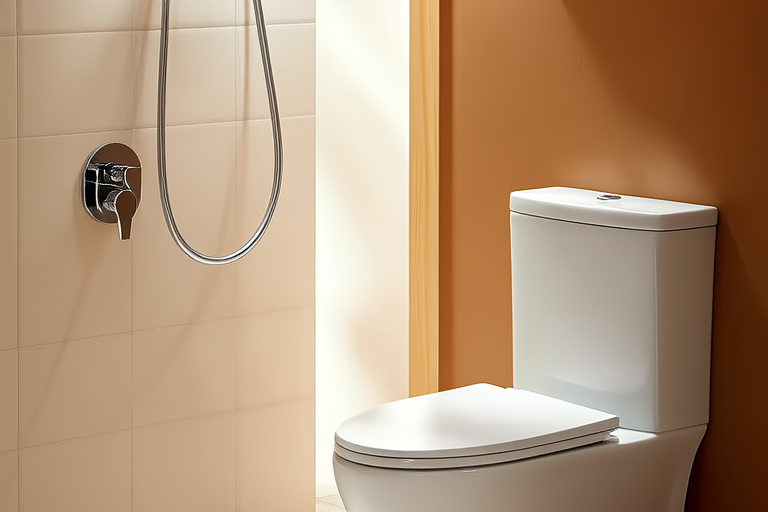Introduction: The Importance of Efficient Bathroom Fixtures
In today’s world, where water conservation is more important than ever, choosing the right shower head and toilet can make a significant difference in both your utility bills and environmental impact. Not only do efficient fixtures save water, but they also contribute to energy savings by reducing the amount of hot water used. This guide will walk you through everything you need to know to select the perfect shower head and toilet for maximum efficiency.
Understanding Water Efficiency Ratings
Shower Heads: Look for WaterSense Labels
When shopping for a new shower head, one of the first things you should look for is the WaterSense label. This certification ensures that the shower head meets strict criteria for water efficiency without sacrificing performance. A standard shower head uses about 2.5 gallons per minute (GPM), while a WaterSense-certified model typically uses 2 GPM or less. This means you can enjoy a luxurious shower while saving up to 20% on your water bill.
How to Calculate Your Savings:
- Current Usage: If your current shower head uses 2.5 GPM and you shower for 10 minutes daily, you use 25 gallons per day.
- Efficient Usage: With a 2 GPM WaterSense-certified shower head, you would use only 20 gallons per day.
- Annual Savings: Over a year, this could translate to hundreds of gallons saved and reduced utility costs.
Toilets: Dual-Flush and Low-Flow Options
Toilets account for a large portion of household water usage, so it’s crucial to choose an efficient model. Look for toilets with dual-flush or low-flow options. Dual-flush toilets have two buttons—one for liquid waste and another for solid waste—allowing you to use only the water needed. Low-flow toilets, on the other hand, use no more than 1.28 gallons per flush, compared to older models that use up to 3.5 gallons per flush.
Types of Efficient Toilets:
- Gravity-fed toilets: Rely on gravity to move waste through the system.
- Pressure-assisted toilets: Use compressed air to push waste through the pipes, providing a stronger flush.
- Vacuum-assisted toilets: Utilize a vacuum system to enhance flushing power.
Factors to Consider When Selecting Shower Heads and Toilets
Shower Heads: Pressure and Spray Pattern
While water efficiency is paramount, the shower experience is equally important. Pay attention to the water pressure and spray pattern when selecting a shower head. Some shower heads offer adjustable spray settings, allowing you to switch between a gentle rain-like mist and a more invigorating massage spray. Ensure that the water pressure remains consistent throughout the duration of your shower, even if you have low water pressure at home.
Tips for Improving Water Pressure:
- Install a water pressure booster pump if necessary.
- Clean your showerhead regularly to remove mineral buildup.
Toilets: Size and Installation Requirements
The size of your bathroom and the available space around the toilet are critical factors to consider. Measure the distance between walls, doors, and any other obstacles before purchasing a new toilet. Additionally, ensure that the toilet you choose fits your plumbing system. Some modern toilets require specific types of flanges or mounting hardware, so consult a professional plumber if you’re unsure.
Installation Tips:
- Always turn off the water supply before installing a new toilet.
- Use a level to ensure the toilet is perfectly aligned.
- Seal the base with appropriate caulk or wax rings to prevent leaks.
Real-Life Examples and Practical Advice
Case Study: Retrofitting an Older Home
In a recent project, a homeowner decided to retrofit their 20-year-old home with more efficient fixtures. They replaced their old 3.5 GPM shower head with a WaterSense-certified 2 GPM model and installed dual-flush toilets throughout the house. After just six months, they noticed a significant reduction in their water bill, saving approximately $100 per month. The family also appreciated the improved water pressure and spray patterns of the new shower head.
D.I.Y Maintenance Checklist
To keep your new shower head and toilet running efficiently, follow these simple maintenance tips:
Shower Head:
- Clean the aerator every few months to remove mineral deposits.
- Check for leaks and tighten connections as needed.
Toilet:
- Test the flush mechanism periodically to ensure it works smoothly.
- Replace the wax ring every 5-7 years to prevent leaks.
Conclusion: Taking Action for Maximum Efficiency
In conclusion, choosing the right shower head and toilet can lead to substantial water and energy savings. By focusing on water efficiency ratings, considering key factors like pressure and installation requirements, and following practical maintenance advice, you can maximize the efficiency of your bathroom fixtures.
Actionable Steps:
- Research and purchase WaterSense-certified shower heads and dual-flush toilets.
- Measure your bathroom space carefully before making any purchases.
- Implement regular maintenance routines to extend the life of your fixtures.
By taking these steps, you’ll not only save money but also contribute to a more sustainable future.
